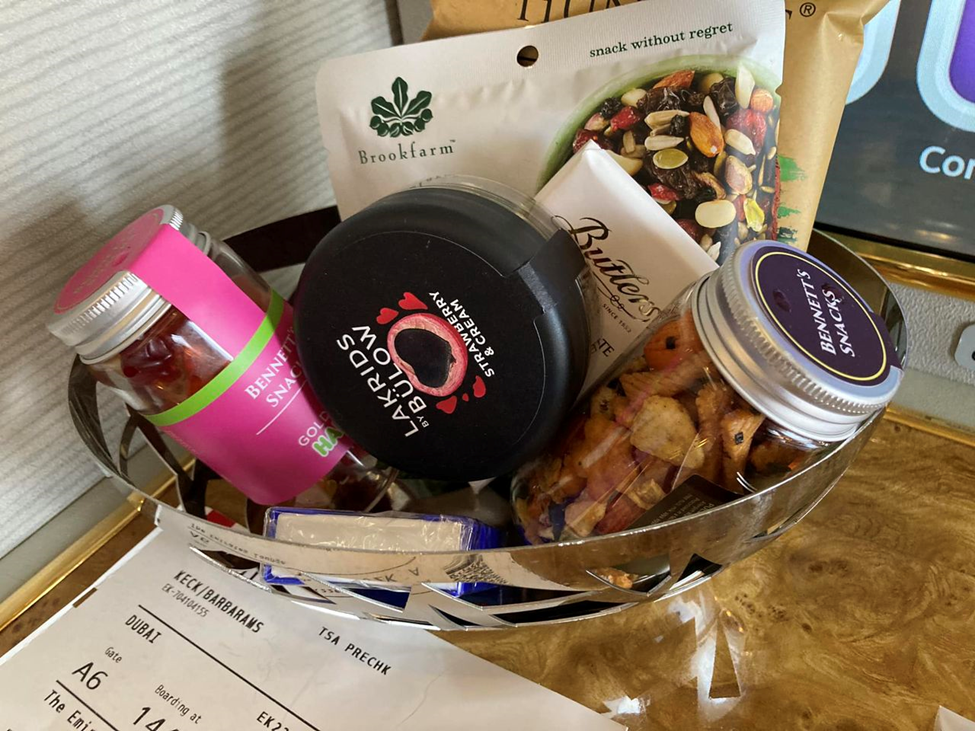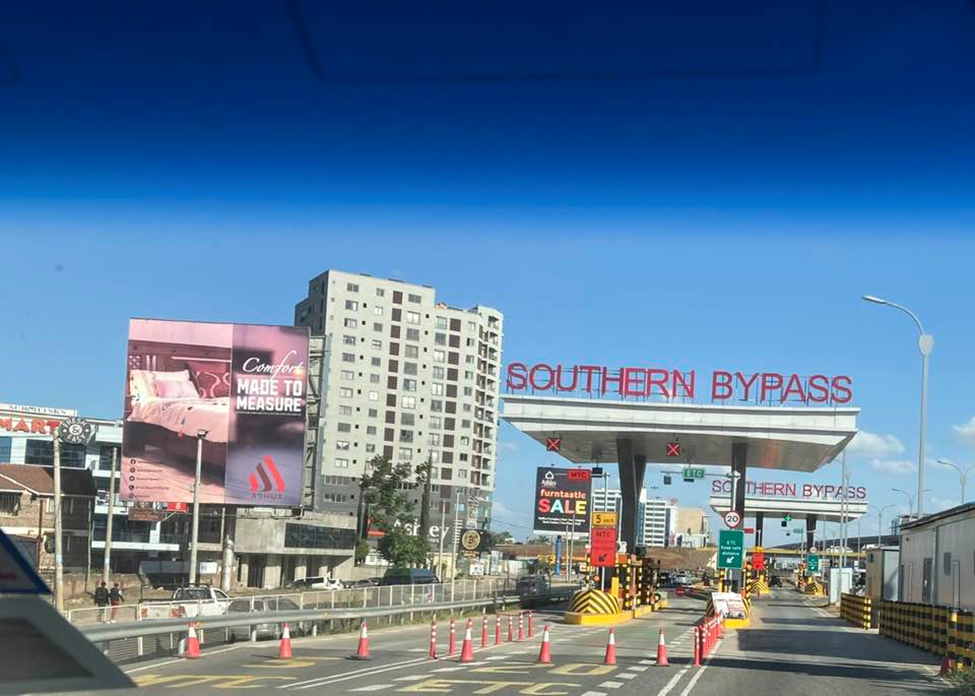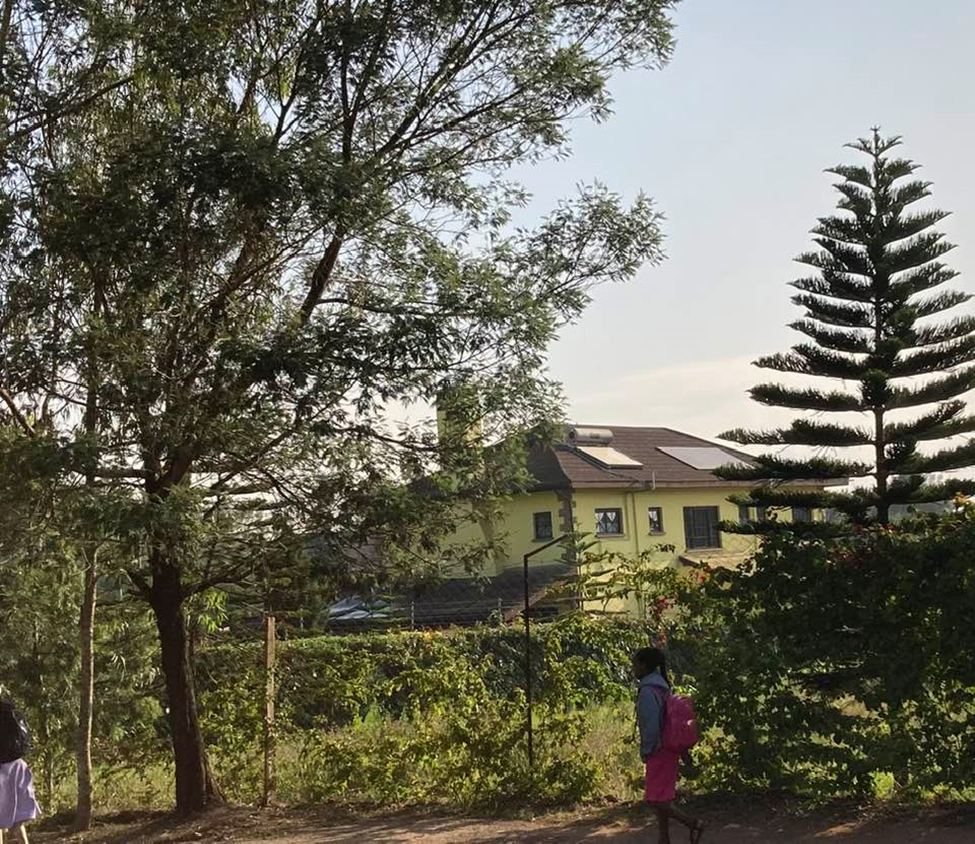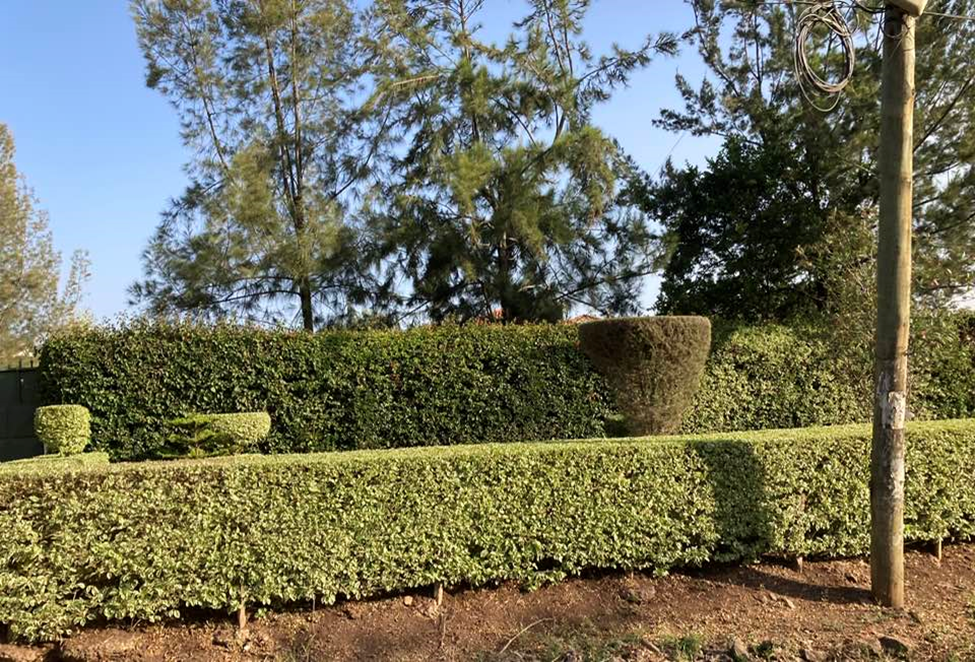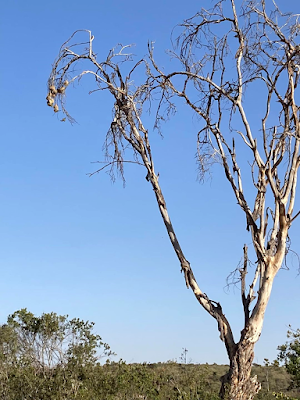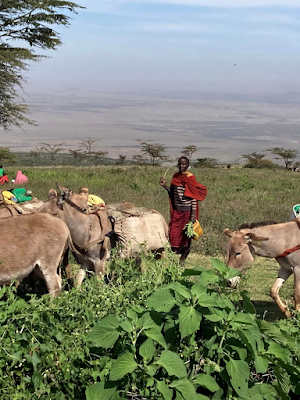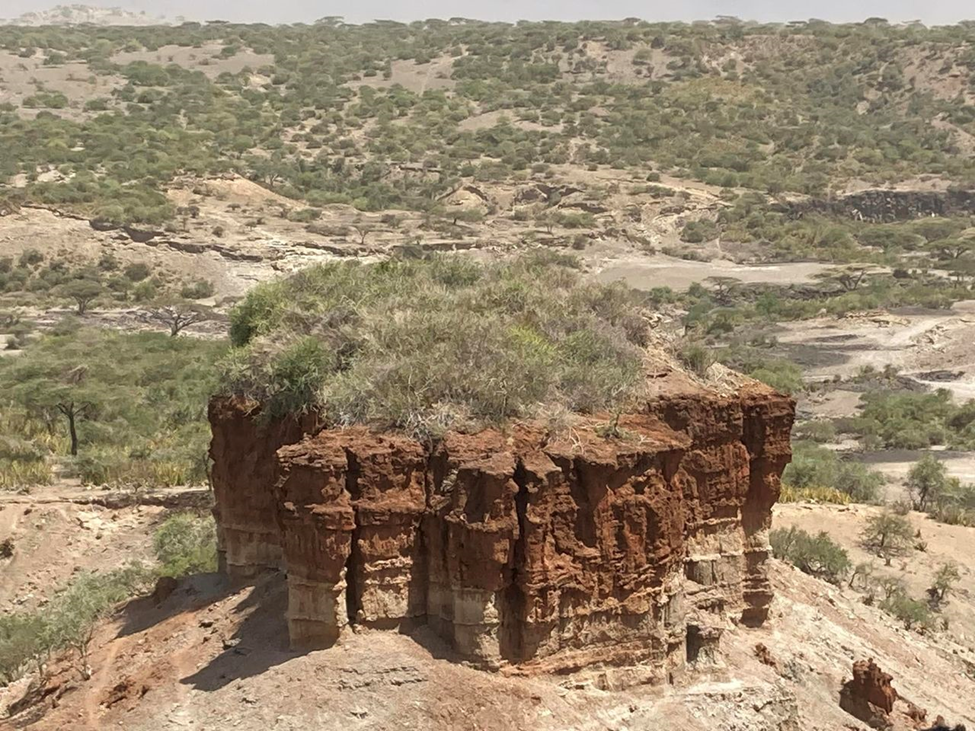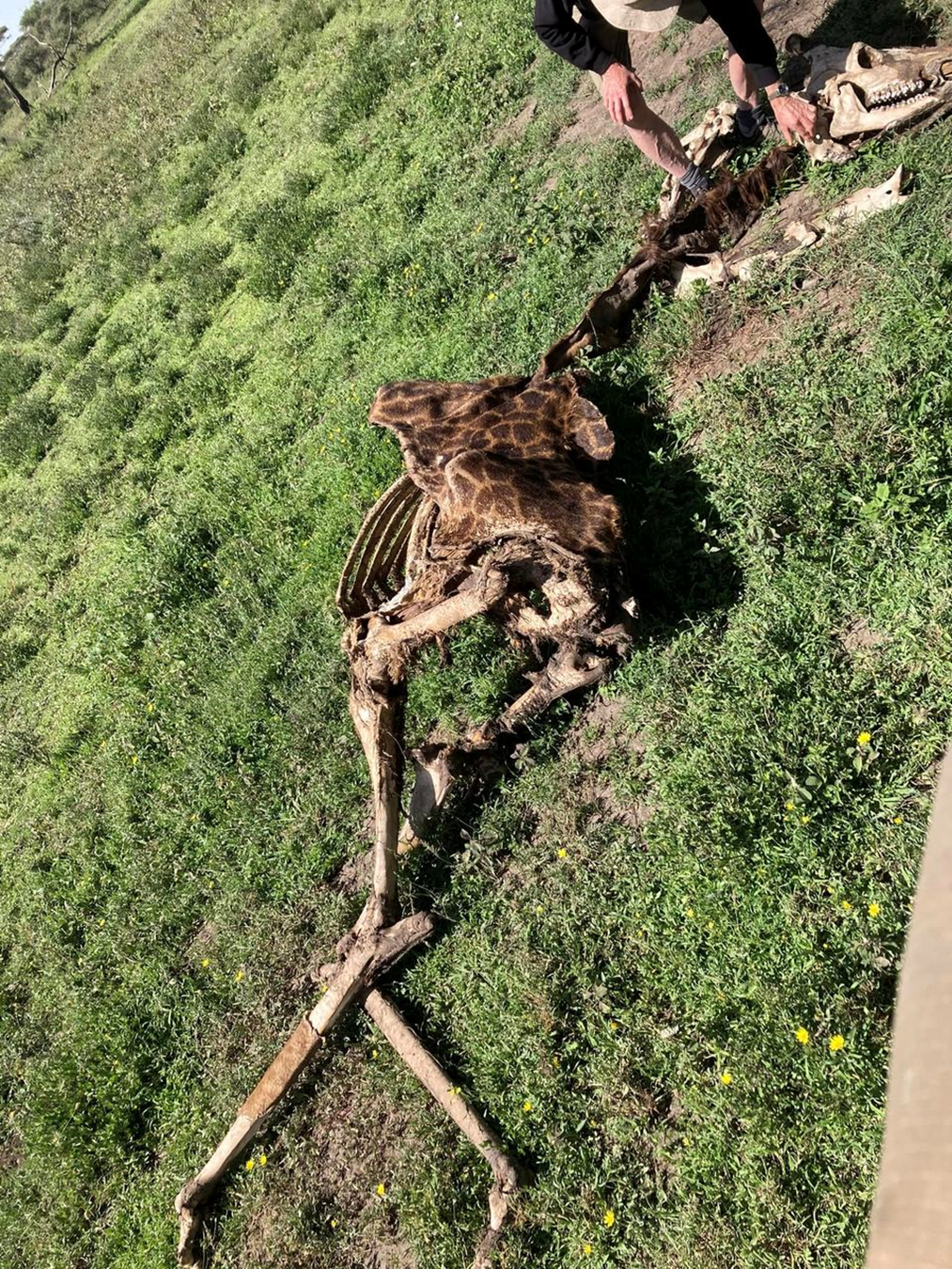January
13, 2023, California Time
So Pippi and I
are about to get on our Emirates 19 hour flight to Dubai, first of many
adventures over the next five weeks. Will probably do a post from Dubai, where
we have to hang around for five hours, until we get on the connecting flight to
Nairobi.
Pippi settles
into to our little hovel in the ski. Not likely that she or I will be able to
eat all the snacks and drink all the beverages that are offered before
take-off, but we will make some headway on the book I brought. Long flight.
Cool amenities!
Airplane dream come true!
So fun to see
the pre-flight safety videos, and info about entertainment options…!
January 13, 2023, Dubai Time
It’s a long
flight, and Dubai airport is huge. I was surprised and pleased to have this
fellow meet me as I departed the plane, and assist me through a security
checkpoint to the newest terminal, where my flight to Nairobi will take off in
about five hours. In the meantime, I was offered the opportunity to have a 15
minute massage sometime during my layover, compliments of Emirates. Would I
like that, asked the check-in lady at the emirates lounge? Uh, yes…
It seems to me
that Dubai is giving the world lessons on how to do an airport right. (of
course, it doesn’t hurt to have all that oil revenue…). This is a passenger
dining room, but I was informed that you have to order ala carte right now,
which is 9:15 in the evening, Dubai time, because the Buffet does not open
until 10 PM. If you’re traveling with a larger group, like a family, you can
have a meal served in a little private room like this. All gratis, of course
for first class passengers. Most flights out of Dubai Leave after 8 PM, my
airport guide guy told me. Of course, I had to make a visit to the ladies room…
I’ve never seen a ladies room with mosaics like this!
A few more scenes from the Dubai airport experience. First, the food in the dining room in the business and first class lounges is fantastic; here, a late supper appetizer of seared scallops. Second, there’s plenty to read, as Pippi Longstocking finds out, but she must brush up on her Arabic first. Don’t worry, all kinds of other publications from around the world are available for those who want the daily news. And last, this incredible six story airport, getting busy now, which is 1 a.m. in Dubai. Onward to Nairobi; five hour flight leaves at 2 a.m.
I am such a pushover for all this technical flight stuff and maps that Emirates showed on the TV screen in my comfy little cabin. My idea of great entertainment! I was also impressed that on the flight to Nairobi from Dubai, there were 11 flight attendants, who, between them, spoke 14 different languages. I learned a new word today in Swahili: Asante, which means “thank you”.
January
15, Nairobi Time ~ Nairobi!
A mere 21 hours of flight time, +5 hours to change planes in Dubai, +3 hours in
San Francisco +2 hours to clear customs in Nairobi and get to the hotel…
Finally, I can take off my airplane support stockings, dig out my cosmetics,
and settle in. I’ll be here for the next three days. Oh, I forgot, the company
that was supposed to pick me up from the airport, and take me to the hotel did
not show up; They made a mistake on their end about my arrival date. I hung
around for 45 minutes and then a taxi driver approached me, we negotiated a
price in US dollars, and off I went. The transfer company called to apologize
and offered to take me to dinner in recompense, but I told them what I believe…
if you can’t bounce with the uncertainties of travel like this, then you should
just stay the heck home.
January 15, 2023 NAIROBI, KENYA
A Sunday
afternoon excursion with my new friend Nelly Odongo, sister of an HBS grad. I’d
contacted June Odongo via our alumnae website; I always like to visit with
other professional women in countries on my travels as this is the way I gain
insight to watch truly going on. June was not available, because she’s on her
way to a venture “angels investor” conference in the US, seeking expansion
investment for the company she started post-graduation which is involved in
creating an advanced software platform to make logistics in Kenya more
efficient. But Nelly took me to the central market in downtown Nairobi, and on
a drive around town as we discussed various elements of daily life of Nairobi,
commerce, and politics. That is Nelly in the bright aqua sundress. The other
photos of what’s often referred to as the “Masai market”, I admit I scraped off
the Internet, so you would have a better understanding of how fun this excursion
was. So much to look at, and the crafts are incredible. Took all of my sales
resistance to not pack suitcases full of these beautiful things. (I decided on
a Christmas ornament…)

A FEW NOTES ON INFRASTRUCTURE/TRANSPORTATION.
My Sunday drive around Nairobi with Nelly included the new highway, the regular
roads, and a glimpse at how the local populace gets from place to place. The
Nairobi expressway is a 27km (17-mile) highway, some of it elevated, that
connects Jomo Kenyatta International Airport in the east of the city to the
Nairobi-Nakuru highway in the west. It was finished just before presidential
elections in 2020. The $550 million project was financed and constructed by the
China Road and Bridge Corporation (CRBC) - and the Chinese firm operates the
highway under a public-private partnership. Kenya is now massively in debt to
China, with Chinese loans comprising 21% of its external debts.
The tolls, about $2-3 depending on the length driven, are pretty high for most Kenyans, so mostly private automobiles are the users of this road. The rest of daily traffic uses the old highly congested routes below the highway.
Kibera is the largest slum in Nairobi, and the largest urban slum in Africa. This is where people come to live when they first leave their villages in the countryside and come to Nairobi to seek work as they hope for a better life. Most of the 250,000 residents in this huge slum work in the nearby industrial area, walking to their jobs daily, in all kinds of weather. With a little more money in their pockets, these workers and families tend to move up the housing and prosperity scale as rapidly as they can. In talking to some local people, I came to understand that those who have already moved up the ladder do not look down on the residents of the slums, but understand it is necessary first step in housing availability in this huge and growing African city. I strongly suggest you click through to this article for more perspective: https://www.kibera.org.uk/facts-info/. There are several other slums in the Nairobi area, and the total number of dwellers in those areas is said to be 1.2 million people.
Monday, January 16, Nairobi Kenya
Sitting in a hotel doing nothing under the pretense of getting over jet lag is certainly NOT my thing. And since I figured out that the front desk of the hotel can find me a car&driver and bill it to my room, I am a woman on the move again! So, here are some of the things I’ve seen as I’ve been out and about in the craziness that is traffic and roadways in Nairobi. Everything in these photos was just a few feet away from the window on the passenger side of the car…which, by the way, is on the left side. I had forgotten that these folks drive under the British system, you know, on the wrong side of the road?
Tuesday, January 17, Nairobi Kenya
On my way today
to meet another of those wonderful Harvard Business School women grads who have
returned to work in their native country, the taxi passed through the suburb of
Karen. The suburb is named after Karen Blixen, who wrote under the pen name,
Isak Dinesen. Born in Denmark, in 1932 she published a non-fiction memoir that
reflected on her years as a settler in Kenya from 1914 to 1931. You’ve probably
heard of it: “Out of Africa“, and there is a film version of this marvelous
book. Now, this suburb is home to both ex-pats and wealthy Kenyans. The houses
are big, the lawns are manicured, and it is a startling contrast from urban
Nairobi.
Today, Tuesday
afternoon In Nairobi, I spent a few interesting hours at the Nairobi National
Museum. One of the first exhibits you see is this artwork. It is a mosaic map
of Kenya, which has been made using a collection of butterflies from various
parts of the country. Kenya has 900 known species found in its diverse
habitats.
More to see at the Nairobi National Museum…. This is a skeleton of Ahmed, who lived on Mount Marsabit in northern Kenya. Marsabit is an isolated volcanic mountain surrounded by deserts. It has long been famous for its big “tuskers” - male elephants, carrying heavy ivory. Ahmed was the most famous of these. He died in 1974 at the age of 55 from natural causes. His tusks weighed about 150 pounds each.
This museum was
hosting a temporary exhibit of photos that were winners in the African Wildlife
Photography Awards competition. I was particularly struck by this magnificent
photo which was a winner in the Conservation Heroes category. “Caregiver and
African savanna elephant, (endangered)”. Further explanation: “Mary Langees is
one of the dedicated caregivers of orphaned rescued elephants at a
community-owned sanctuary. Elephants exhibit affection by using their trunks
through touching and caressing.”
I am afraid that
I managed to insult Pippi Longstocking today, when I accused her of being out
of her gourd. Or, was it out of hundreds of gourds? This huge display at the
Nairobi National Museum shows some of the diversity of this vegetable and the
way it is used to make containers, carriers, and decorative arts in Kenya.
Wednesday,
January 18, 2023
Seen on the way
to Village Market, a huge modern shopping mall with plenty of outdoor spaces
and four levels, located in the Gigiri residential area near the United Nations
headquarters on the outskirts of Nairobi.
The Village Market Mall has two terrific food courts, and Pippi Longstocking, and I had lunch there. Of course, I shopped for a rugby shirt for my son, Matthew; I try to bring him back one from every country i visit. The mall includes 2010 ft.² of retail space, and it got plenty of awards for its architectural inventiveness. Various art and modern sculptures are scattered throughout, and it is so big it can accommodate a good size bowling alley too!
Thursday,
January 19. THE SAFARI BEGINS!
After breakfast
as a group, our 11 travelers and guide Lex Hes took a charter flight to Loisaba
Conservancy.
Today our group
departed the hotel at 9 AM, took a van to Wilson airport, got into this plane
which accommodated all 12 of us plus a copilot and a pilot and our allocated 30
pounds of luggage total each, and we left Nairobi behind. We flew close to
Mount Kenya and soon we were in the desert area, part of the Rift Valley, on
our way to Loisaba Conservancy. The
Conservancy includes two permanent rivers and several springs, which attract a
wide variety of wildlife to the area throughout the year. With over 250 bird species and 50 mammal
species recorded, on the game drives we will look for endangers reticulated
giraffes and Grevy’s zebras and we are sure to see herds of elephants, prides of
lions and possibly cheetahs.
 |
| Flying over Nairobi |
 |
| Mount Kenya in the distance |
 |
| Part of the desert area of the Rift Valley |
The mostly-grass airstrip at Loisaba is a busy place, with two other planes landing and taking off there within a short time of our arrival. It has all the modern conveniences such as baggage handlers! The greeting center at the Conservancy featured toilets !!! and a terrific presentation on the efforts to protect wild dogs, giraffes, and tagging of elephants in order to track their travel paths through the conservancy to eliminate possible conflict with villages.
We started with a morning game drive. Each of our safari vehicles holds six passengers plus a driver. Right out of the literal gate, within 500 feet of our drive, we see a greater kudu, who is happily having lunch by feasting on morning glory vines.
About 30 minutes later as we
traversed extremely rocky and rotted roads, our driver pointed out a pride of
lions who were resting in the shade at the top of a hill after gorging on a
water buffalo that they had caught last night. It was difficult to see the
lions at first, but the trained eyes of our driver/guide knew exactly where to
look. There were two females and two cubs, and two adolescents, with themselves and their feast well hidden in the landscape.
Our first day at Loisaba Conservancy started with a morning game drive after we checked into our fairly luxe tented safari camp.
After lunch, and
a rest…because, as the saying goes, only mad dogs and Englishmen go out in the
mid day sun…we had afternoon tea (and cake) and then at 4:30 began our
afternoon game drive. One of the highlights was returning to the site we had
seen at a distance this morning, of two females, and four cubs feasting on a
water buffalo. Not too far away, a hungry jackal waited his turn, but I doubt
that there would be any scraps left after observing this pride still at their feast.
 |
| The jackal waits... |
Beautiful
sundown as we end our game drive on our first day in Loisaba Conservancy.
Friday,
January 20 – Loisaba Conservancy
GOOD MORNING,
AFRICA!
In case you were
wondering how tough this expedition is, here’s the answer: pretty luxe. From
served breakfast and lunch in the main tent, to our “tented safari” rooms, to
the wonderful view we have from those rooms over the Loisaba Conservancy area.
view from our tented safari room
January 20 is Day 2 in Loisaba Conservancy, Today was giraffe and zebra day. Our morning game drive took us in close proximity to reticulated giraffes, also known as the Somali giraffe.
Later, we saw the Grevy’s zebra, which is found almost
exclusively in northern Kenya, and is endangered. It is a unique species of
zebra known for its thin stripes and tall appearance.
 |
| to see giraffes walking, scan this QR code |
We shifted camp today to KIBOKO STARBEDS. For one night, we will be sleeping, almost in the outdoors… Almost because the handcrafted four-poster beds, shrouded with mosquito netting, are rolled out to the deck area for the night. This unique safari experience is located above the Kiboko dam, which has created a river in which we can see elephants bathing and a group of submerged hippos. By the way, Kiboko in Swahili, means “hippo.“. The greeting party at this lodge first offered us hibiscus juice, and then showed us the way to our rooms, which are located at various remote locations down a stone path. I’ll be asking for help to navigate that path in the evening after dinner, I know…
 |
| Our staff at the Star Beds |
 |
| Path to my Star Beds "room" |
 |
| View from the room |
 |
| Scan this QR code to get a guided tour of a Star Beds room |
At 6:10 a.m., the sun rises and the birds begin singing!
https://www.facebook.com/592039044/videos/727858398943388/ = morning sounds in Loisaba
Coming back from
our morning game drive, this elephant was angry, because he wanted to pass to
the other side of the road in exactly the spots at which our vehicle was
stopped! How do you tell an angry
elephant (sounds like a joke, because you better not try to tell him anything
but simply figure out the safest way to leave the scene)…. Anyway, the ears
flare. So yes, this guy was angry!
https://www.facebook.com/592039044/videos/1860489161016840/ = video of confronting an angry elephant in the road
More
time with giraffes! Afternoon snack
time…
Whistling thorn
acacia is a favorite of these giraffes. The tree has developed a mechanism to
preserve itself: it allows these small ant-like insects to build a boll kind of
nest at the base of its thorns. When a giraffe attempts to eat the tree, the
insects bite the giraffe’s tongue, and it often stops because of the sting.
This species of
acacia tree, the Acacia xanthophloea, is often referred to as the “fever tree”.
The story behind the name is that early settlers and explorers in Africa would
camp under the tree, because of its shade, little realizing that the cool and
damp ground was a terrific breeding place for malaria-laden mosquitoes. It is
also known as Yellow-barked acacia. It can reach more than 25 m, or 80 feet, in
height, and grows in areas with high ground water tables.
In this dead
fever tree, there were a cluster of weaver bird nests. Weaver bird nests are
made by the males, and the females can accept or reject the nests. Sometimes
abandoned nests are taken over by starlings or oxpeckers.
This invasive
species of cactus is found in much of the Loisaba Conservancy area. Hard to
know where it originated, perhaps the first was someone’s ornamental plant that
was tossed out unthinkingly. The problem is that these cactus compete with
native plants, important to animal life, and the overall ecology of the region.
Cactus are not providing food to the wildlife except that elephants and baboon
will eat the cactus flowers. When the elephants eat the cactus flower, their
urine turns red! There’s an active program by Loisaba Conservancy management to
try and eradicate the cactus, both by burying it, and by trying to find an
insect predator. These efforts are supported by the Nature Conservancy.
Camels are one
animal which was introduced to this part of Africa. Most of them seem to roam
free, as you can see this group that is enjoying a drink near the dam. There
are obviously some that are domesticated, as all of the Safari camps seem to
offer an option to take the camel ride. That activity is not for me…
Lunch in the bush. A convenient place to wash your hands before lunch.
And wherever you
look, birds are happy to hang around, hoping for a crumb.
Here, as
everywhere else in the world, water is a precious commodity. When watering
places or streams form in this part of Kenya, they are truly beautiful places
to behold, as they are sumptuous oasis in a dry savanna.
On
Saturday January 21, Safari Day 3, I took a trip by myself with the driver named Mambo to a
Samburu village about 30 minutes outside the Loisaba Conservancy. I was greeted
by Peter and Abraham, 23 and 24 years old, so still “warriors” responsible for
minding the chief assets of their families — cattle. Both these fellows are
college graduates who returned to their area to help preserve the culture of
this pastoral tribe. Although the women’s dance and the men’s jumping
competition were staged for my benefit, nonetheless the costumes, rhythms,
songs and dance steps are authentic. Fun to see the children emulate and
participate! In Samburu culture, warriors are aged 15-25. After that one
becomes a junior elder. Since elementary education was mandated by the Kenyan
government about 25 years ago, it’s been difficult to maintain the traditional
pastoral life of constant tut relocation to find pasture for their cattle.
Today the warriors go with the cattle and women and children and old men are
stationery in the village or its surrounds.
(This is my one disappointment in the Miru Expeditions arrangements … no
real time to interact with the cultures in the areas we visit…. I had to make
these arrangements on my own.)
 |
| Peter and Abraham, my college-graduate escorts around this “cultural village.” |
The houses of the 7 families are made of clay mixed with cattle dung, over a structure of sturdy branches and woven sticks. Cooking is done over the circular stone hearth. There is space between the walls and roof so that smoke ventilates naturally. The one concession to modernity is a layer of polystyrene on the middle of the clay/dung roofing material, used for waterproofing.
The Croton bush is found everywhere in this area of Kenya and it’s leaves are a natural insect repellent. The Samburu line the inside of their roofs with these leaves to keep their homes insect free.
In the late
afternoon, the African sun is still pretty intense, so the grandmothers and
small children take shade at the side of a house.
The bead
handicrafts made by this group and the Maasai are found everywhere for sale in
shops throughout Kenya because they are justifiably famous for their color,
design and creativity. But in this village I had a chance to meet one of the
creators. Come visit me and I’ll serve you some groundnuts (peanuts) in this
lovely bowl decorated with cowrie shells. Cowrie shells are valued for
decoration and were once used for currency (think: wampum) in many places in
Africa.
On the way back from the Village, we crossed over a fairly noisy, but safe bridge, and saw gorillas.
Then, Mambo drove into the
cactus area where leopards like to hide, using the cactus as camouflage. I had a great opportunity to see a young
female leopard.
Sunday, January 22 -Safari Day 4 morning, last game drive in Loisaba Conservancy. This
lion kill of a young Water Buffalo will feed the family for a while. The
lioness tries to move the carcass into the shade and out of the open, where it
can be more readily defended from hyena and jackals. The lioness weighs perhaps
110 kg and the carcass about 140 kg, so it’s hard and slow work. The cubs and
mom (all have full stomachs at this point), but the cubs are no help in stowing
the carcass in a safer place and in fact a bit of a hindrance — they want to
play with their food. (Remember when your mom told you not to play with your
food? There’s a reason…). In this current drought here, all animals but
particularly buffaloes and elephants are weakened and thus are easier prey.
Sunday, January 22, Safari Day 4 - By 10 in the morning on Safari Day 4, we were on our way to Mara North Conservancy. This is a 70,000 acre Conservancy which borders the famed Maasai Mara National Reserve. More than 800 Masai pastoralists also live within the Conservancy, tending their herds of cattle and sheep and, increasingly, many of them advance their education and work in the tourist economy. During our flight, we go over parts of the Great Rift valley, and over the Mara River (which is a major site of the June-July wildebeest migration).
When we land at the airfield we were greeted by the guides who will be with us for the next few days with tea and cookies. Our Miru group guide, the well-known Lex Hes from South Africa, poses in front of the Conservancy sign.
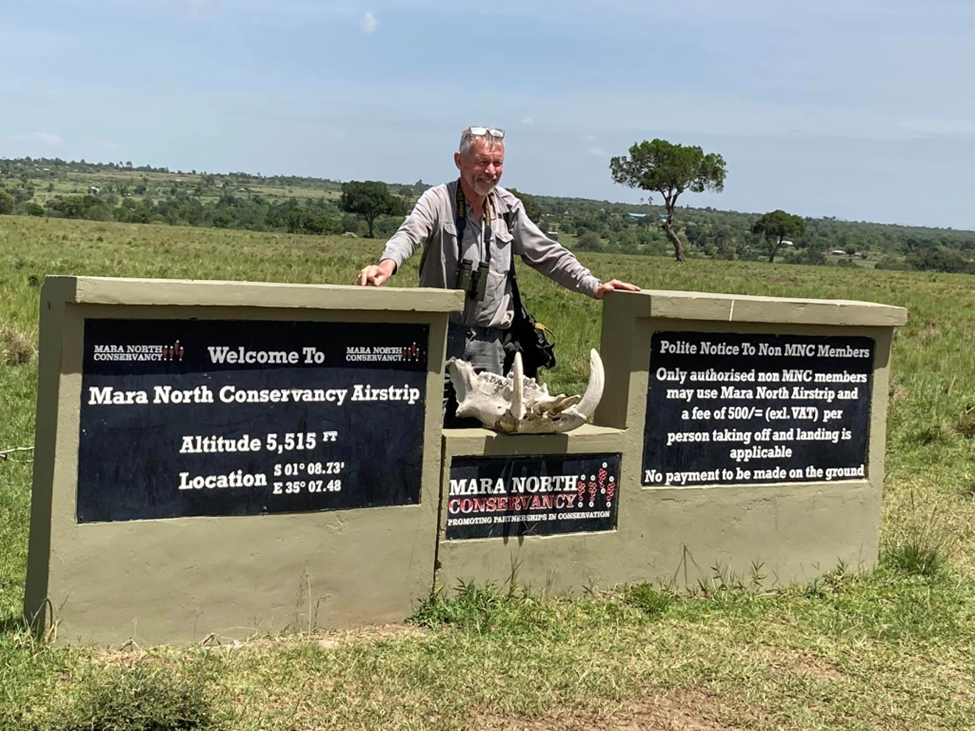 |
| Lex Hes, our Miru Expeditions tour guide |
Our tour company chose the Mara North Conservency for this leg of our safari because it has one of the lowest visitor and vehicle destinations in the area. So we don’t have to be one of the crowd in the Maasai Mara which is one of the most popular safari destinations in the world.
Within 5 minutes
of landing at the Mara North conservancy, we’ve seen many different animals:
zebra with a one week old foal, a warthog family with nursing pups, wildebeest.
impala, Thompson gazelle, and warthogs taking a mud bath. We haven’t seen
giraffes yet but plenty of evidence they are here as the grazing line of the
“moth trees” are high and uniform.
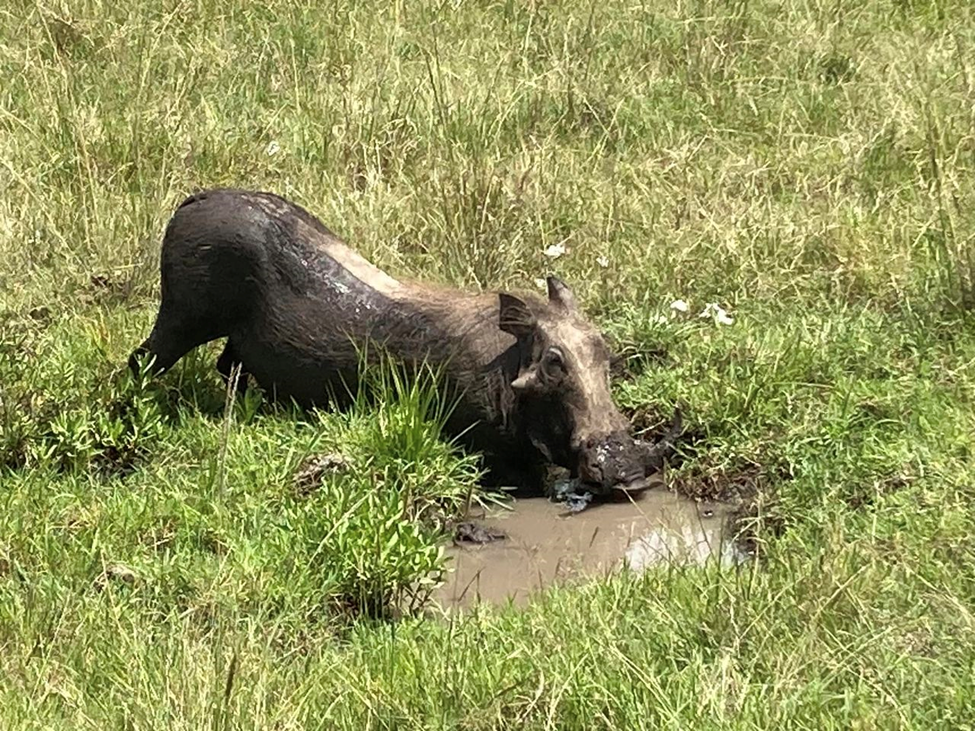 |
| warthog taking a mud bath |
Here is a video look
around my accommodation in the Mara North tented safari camp, named Elephant
Pepper. It is called that after the pepper tree here, which the elephants
love. We have been cautioned that animals walk around the camp at night, and
never to go out without an escort after 8 PM and before 6 in the morning. We are given walkie-talkies to call for assistance
if needed, and for escorts to, and from our tented room. Monkeys are a problem.
Fast and clever thieves!
(This was absolutely my FAVORITE of the four camps we were in, and it also has
a spectacular cook!)
Take
a look around my tent room in the Elephant Pepper camp at Mara North:
https://www.facebook.com/592039044/videos/pcb.10162116645014045/2699485500188631
or
 |
| If the link above doesnt work, scan this QR code |
Afternoon game
drive in Mara North Conservancy - LIONS! The Marsh pride, featured in a recent
documentary available on streaming services, brought down a topi. Lions will eat
25% of their body weight in one sitting.
Later, we saw a magnificent male lion, who wasn’t quite sure if he was awake or not.
During the afternoon drive in Mara North Conservancy, we visit a hyena den. They have taken over an aardvark burrow. MORE ABOUT HYENA: the spotted hyena are what we see in Mara North. Hyena are on the cat side of the mammal family tree, not the dog side. Cubs are born completely black, and as they age they get lighter. The last part to lighten is their back legs. Cubs nurse for 12-18 months and then start going out with the pack. Female hyena have the ability to chew up bones, which gives a high quality milk. Hyena will hunt on open plains; usually we think of hyena as scavengers. But they are successful hunters in their own right.
To see the video of the cubs in the den:
https://www.facebook.com/592039044/videos/pcb.10162119576729045/860776868518200
or
Scan the QR code to see the hyena cubs video
I did want to
share what it’s like in part to be on a game drive…See the video of the water
crossing.
https://www.facebook.com/592039044/videos/pcb.10162119260519045/700004938168183 or
 |
| video of crossing a water area in the safari vehicle...hold your hat! |
At the end of
Day 5, guess who came to dinner at the nearby edge of our safari camp?
Tuesday January 24, Safari Day 6, Mara North conservancy - it rained really hard last night,
so our morning drive, for the first two hours at least, was shrouded in mist.
Since we are not far from the Mara River, the mist persisted on the horizon for
quite some time = beautiful.
Safari Day 6 in Mara North seems to be baby day. Actually, as far as I can tell, every day on an East African safari is baby day. How many of these animals can you name/identify?
Safari Day 6,
Mara North Conservancy - today our morning drive had a final destination of the
Mara River, which is famous as a place that wildebeests crossover during the
great migration in June and July. Many crocodiles lie in wait for them there.
However, our visit to the river could be denominated as “HIPPO DAY.” Hope you
enjoy the videos and photos. In one photo, if you look closely, you can see an
alligator lying in the sun and well camouflaged on the far bank.
 |
| most of those blobs in the river are hippos |
 |
| look closely to see the alligator on the river bank... |
To
hear the hippos vocalizing, and THAT IS REALLY INTERESTING, go to this video:
https://www.facebook.com/592039044/videos/pcb.10162121462739045/1591157908013326 or
 |
| If the "www" link doesn't work, scan the QR code to hear the hippos vocalizing... |
VILLAGE VISIT I decided that
it was more important to go and see a local village, then to go on another game
drive. So I organized with the Elephant Pepper camp administration to have a
guide take me to a Maasai village. Here
is a a look around the village… with a man from the village who met me at the
safari car.
Here is the
video of the village tour:
https://www.facebook.com/592039044/videos/pcb.10162122153579045/720684103106713
or
I
decide to join the ladies in a dance….this is me at my dork best. Please don’t laugh too hard when
you see this video…
https://www.facebook.com/barbara.keck.writes/videos/1677807882636662
A demonstration
in the Maasai village of starting fire, the old-fashioned way, with a flint, a
stick, and tinder.
Wednesday January 25, Safari Day 6–7. A beautiful cloud display just before it
rains heavily again in Mara North Conservancy’s Elephant Pepper camp.
A little bit difficult to sleep last night, with the rhino rooting outside of my tent, about 6 inches away from the canvas side, which happened around one in the morning and continued for a good 90 minutes. I could hear him, pulling up the grass, and chomping. No grunting sounds, thank goodness.
January
25, Safari Day 7
- Early in the morning, we left to start
our journey into Tanzania. On the way, we saw a lion resting with some
wildebeest not far away.
The journey to
Tanzania went like this: our 12 seat charter plane took us to Nairobi, and from
Terminal 2 we had the opportunity to present our passports, go through Kenya
customs, and then take our shoes off and put our luggage on the security belts
no fewer than four times. A funny thing happened at passport control, when one
of the immigration trainees mixed up the passports for one of the married
couples. After discovering his error, he looked at them and said, “Well, you
look very much alike.“
Finally, we flew into Tanzania and saw Mount Kilimanjaro from our airplane window.
We cleared
Tanzania customs in Kilimanjaro airport, got back on the plane, then first
flew over Arusha, which, when I was there in 1974, was just a dusty village.
Now it has become a center of tourism to the Ngorongoro Crater and Olduvai
gorge. You can see for yourself how much it has expanded!
 |
| The city of Arusha, Tanzania, in 2023. |
We landed at Lake
Manyara airport, and then took a grueling and bone-shattering 2 1/2 hour
drive up to our lodge.
Wednesday January 25, Safari Day
7:
On the way to the lodge, we stopped at checkpoint to stretch our legs and were warned to close the windows of the Safari car, because these very aggressive baboons will climb in.
About an hour into the drive up the bone-jarring roads on the mountains that ring the crater, we stopped at a Lookout where we could see the Serengeti plain beneath us.
See the video of the crater.
https://www.facebook.com/592039044/videos/pcb.10162124536934045/864335188169722
or
After 9 hours door-to-door from Mara North, we
arrived at the ENTAMANU NGORONGORO lodge, which sits high above Lake Magadi.
During our orientation from the lodge manager, I happened to look out the
window, and what did I see… but a giraffe walking about 40 feet away!
This very remote
lodge is beautiful, perched at the rim of the Ngorogoro Crater and set over the
Serengeti Plains. Below are links to the
video on how my tented safari room is organized. Tomorrow, we go on a game
drive into the crater. It will be another double-Motrin day…these safari
vehicles at these camps on this trip are not very comfortable. To say the least!
https://www.facebook.com/592039044/videos/pcb.10162124536934045/842977237001878
or
 |
| scan the QR code to see the video |
Thursday
January 26, Safari Day 8 –
After a 5:30
wake-up call, and a walk to the lodge along the gravel path strewn with fresh
giraffe poop, I got in the vehicle. The tour plan is to be at the entrance gate
to the crater as early as possible. It is a 4 km drive from the gate down to
the floor of the crater. This photo is a stop that we made on the way down.
It’s now 6:45 a.m. and there are already 14 safari vehicles on the crater
floor. Getting here early is key! This is not really a crater, by the way: it
is an ancient volcanic caldera formed 2-3 million years ago by the implosion of
a large volcano that at the time was bigger than Mount Kilimanjaro. . The site is protected from the outside world
by a huge rim, and it is the world’s largest intact caldera as well as a UNESCO
World Heritage Site and one of the Seven Natural Wonders of Africa. The abundance of food and freshwater in
Ngorongoro supports an estimated 30,000+ large mammals. About a fifth of the wildebeest and zebra
migrate out of the Crater seasonally, the lions and most other animals are here
year-round.
We descended
2000 feet (600 meters) into the caldera, but our goal of seeing a rare black
rhino except at a tremendous distance was not met even though this area is one
of the best places to find them in East Africa.
Now we are on the floor of the crater for a game drive
We see a small group of wildebeest
near the shore of Lake Magadi. My iPhone camera is not good enough to capture
the birthing of a new wildebeest, but it was remarkable to watch. Within 5 minutes
the baby was stable on its feet, and nursing. We watched for quite a while, and
then went to a picnic area. The tourism in the crater is tightly controlled; only so many vehicles can enter in one day via a gated narrow entry, and picnic and toilet areas are few. At our picnic area, Pippi Longstocking gives a good perspective on the
size of Buffalo horns.
As you would
expect, there are loads of animals in the Ngorongoro crater. The usual
suspects… Elephant, wildebeest, rhino, all kinds of antelope, zebra, warthogs,
lions … but you rarely see a giraffe in the crater. They tend to prefer hanging
out in the Highlands and Foothills around the crater. Today, several thunderstorms
rolled over parts of the crater, but they were quickly finished. You can see
the zebra with the storm clouds in the background. and then, for fun, I’ve posted a picture of
four zebra, two of them are colts.
Wildebeest, also know as a gnu (for those of you who remember the Gary Gnu show?)
On the way back
to our camp, which takes 45 minutes from the park exit gate, several herds of
cattle were being taken back to the villages by Maasai boys. The Maasai have dominated the area since the
early 1800s after they drove our the Datoga and the Mbutu tribes who had occupied
it for about 2000 years. The crater is
named by the Maasai who called it El-Nkoronkora which means “Gift of Life.” Maasai no longer live in the Crater but still
take their herds of cattle and goats down ancient trails onto the crater floor for
grazing and water, as has been done for centuries.
Friday
January 27, Safari Day 9
We start our day
a visit to a nearby Maasai village. We are greeted by a dance and jumping
competition and then a visit to a home which
is made of adobe comprised of cow dung mixed with mud and wate. Then of course we visited the ever-present
craft market that every village has in the event that tourists visit. The
cattle are brought in every night to the boma, an enclosed circular area, to
protect them from predators.
The usual
souvenir stand at the side of the village…
Donkeys are used
as a means of carrying water back-and-forth to the village...mostly the work of women and girls...
Day 9, late morning, we visit the overlook near the museum at Olduvai Gorge. Marvelous view!
Many famous discoveries of early men were made there, and are featured in the museum dedicated to the Leakey family. The story goes that a German explorer was studying butterflies and THC flies in this area, and found an interesting fossil, which he took to the museum in Berlin. Richard Leakey heard of this, and the rest is history.
Of course, Pippi
Longstocking is extremely interested in the discoveries of early man, although,
as the strongest girl in the world, she is more interested in the discovery of
Lucy, which is in the museum in Addis Ababa, Ethiopia. But that’s another
story. She focusses her attention today
on a replica skull from Olduvai Gorge that’s 1.25 million years old.
A group of banded mongoose lives in the gardens at the Olduvai gorge visitors center. It is one of 4 mongoose species we have seen on this trip. Mongoose are social
animals, living in groups of 20 to 30, live in arid environments, and they eat
insects and small lizards. When concerned, they stand up. They are preyed upon
by owls and other birds of prey as well as hyenas and leopard.
Day 9, afternoon, we leave Olduvai Gorge, and take the only road that exists between Arusha and the Serengeti. After a while, we turn off on a side road, which takes us more in the direction of our destination, which is the Ndutu region of the Southern Serengeti.
The word
Serengeti is derived fomr the Maasai language and means “endless plains.” The Serengeti park was established in 1951, and
was named as a UNESCO World Heritage site in 1981. It covers 14,763 square km in northern
Tanzania . The Serengeti wildebeest migration is as old as the history of
manind, according to fossils found in the Olduvai Gorge that date back to more
than one million years ago.
The Serengeti
plain is just that – – flat and right now (late January) it is very dusty and
lots of flies… the flyswatter made from a cow’s tail is very useful and you can
see it being deployed in the image below.
I DID NOT KNOW I WOULD CREATE A
CONTROVERSY WITH WHAT I THOUJGHT WAS A HUMANITARIAN GESTURE.. It takes us a while to find a shady area that’s an appropriate
place to enjoy our boxed lunch. The food packed and sent with us by the last
camp is way too much. I proposed that we give the extra food to a Maasai woman
who was standing nearby. This created quite a controversy, because our guide is
adamant that this act of generosity will turn these people into beggars. I
differ in my opinion, but he made a big deal about scolding me in front of a
whole bunch of people. I guess definitions of charity and humanitarianism
differ, and I do not think that this is any different than providing food to a
homeless shelter in the United States. People who are hungry should be fed. It
does not necessarily turn them into beggars.
Day 9, late
afternoon, we approach the part of the Serengeti which is a little more green.
The Serengeti Plains are home to the greatest concentration of large mammals on
earth. We will be going on game drives
in acacia savannas and grasslands. There
are lots of wildlife around, and we begin to see the big herds of wildebeest.
We are told by the Director of our next camp, that this is calving season, and
we will see lots of young wildebeests.
The largest count of this migratory herd – driven by the search for food
and water - was 1.69 million in 1989. They
wildebeest are, of course, followed by hungry predators looking for an easy
meal. The migrating herds also include
large numbers of zebra, gazelle and impala – also preyed upon by a variety of
predators.
At this point in
our safari experience, the tops of the land rovers are opened, so those who are
intense camera buffs can stand on the seats, and get a better view of birds and
wildlife. I seem to be doing OK with just my iPhone camera…
For the next three nights, we are going to be in a “mobile Safari camp.“ These are camps which move a few times each year, in order to follow the wildlife. It’s quite a luxury camp, regardless, and I am particularly pleased to be able to take a hot shower. One of the camp attendants fills the bucket in the back of the tent with hot water, and raises it up, and shouts that the shower is ready. He hangs around the back of the tent until you tell him you are finished. If you need more than one bucket of water, which, of course, is warmed by the Serengeti sun during the day, you may have it. Otherwise, those of us who live in California, and are accustomed to taking what is known as a G.I. shower – – turn on water, get wet, turn off water. Soap up. Turn on water, rinse off. Turn off water. These California skills of being conservative with water are very useful in the Serengeti mobile camp!
Here is a look
around my room at the Serengeti Sojourn Camp in the Ndutu region of the
Southern Serengeti…
The video….
https://www.facebook.com/592039044/videos/pcb.10162128979759045/725230202586110
or
 |
| Video of my tent "room" at the mobile safari camp |
Saturday, January 28 – Safari Day 10
Time for a
morning on my own at camp. The others are off on either a hot air balloon ride
– – not doing that, since my balloon crash in Zambia, in 2015, left my right
shoulder permanently impaired – – or a game drive. It’s nice to be in camp,
with only one other person from the group, a very nice woman from Michigan
named Donna, and the staff here. You really get a sense of what it must be like
to live in this part of the world when there is no great gang of other
travelers and time-pressed outings. I woke up around 7:15 to the sound of
birds, and then had a leisurely breakfast in the main area of the camp. Donna
and I watched wildebeest and zebra wander by quite close to the camp. There are
no electrical outlets in our mobile safari rooms, only here in the main area,
which is where we recharge our electronics, and enjoy pretty good Wi-Fi. No
cell phone service in this part of the Serengeti.
The main area of the camp, for lounging, charging devices, and dining
The lantern
outside our tents is kept on all night, to keep the lions away. But at daybreak, the staff extinguishes the
lanterns… and shortly afterwards, the bird chorus begins! Have a listen during this video.
https://www.facebook.com/592039044/videos/pcb.10162130318414045/1365078680989260
or
 |
| Listen to the morning bird chorus! |
Day 10, on my morning off, Donna and I were escorted around the nearby area by a man who aspires to be a guide- but his first priority is to assure that his four children (who live with his wife in Arusha) are educated at least through secondary school. That’s a tall order since even government-run schools require the payment of school fees. On our walk near our camp, we saw the development of acacia from a ground shrub to a full tree (beloved of giraffes who somehow get their tongues around the thorns…) to a dead tree.
There is a lot to learn
about the cycle of nature in Africa, and the Serengeti is full of reminders of birth
and death. Here, we see a giraffe skull and lower mandible.
Our escort
pointed out termite activity ( it is said that water and termites are the most
powerful forces shaping the land in Africa…) and many flowers of which most
have medicinal properties. The purple flower with the yellow middle, “solanum
incanum”, has many uses per the resource book.
 |
| termite activity is everywhere! |
Safari Day, 10 –
during my time-off day, I had a long talk with Holly, who is the executive chef
for Nomad, a company which owns nine camps in the Serengeti. She manages 50
chefs in those nine camps, and creates menus which use seasonal vegetables that
are available, and is teaching the local staff about portion control, flavor
systems, and methods to put food on plates so they are attractive to diners.
It’s a very busy job, and this 20-something young woman from Scotland who
majored in the agribusiness at the University there, has learned Swahili in
order to do her job. One of her recent suggestions to her cook staff is: “don’t
put garlic in breakfast smoothies”. In Swahili culture, ginger and garlic are
used interchangeably; this is one of the things which Holly has learned since
she’s been on the job. She also told an interesting story about something that
has happened more than once, which is that plates of food got cold before it
was served because lions were standing in the path between the cook tent and
the dining area. She is in the process of publishing a cookbook for her staff
to use; so far it’s run to 12,000 words. Here is one of the recipes.
Day 10, afternoon game drive in the Serengeti. Today is LION DAY. We find 2 lionesses taking naps in a tree; the one on the left has a collar because she seems to be the chief leader of her pride and the Rangers want to track her movements. Our guide said that after the lions yawn three times, that usually indicated they would come down from the tree, and that in fact is what happened. After they came down from the tree, they went over to where they had stashed an earlier kill of a young zebra. Traditionally, the male lion eats its fill first. He then stayed away from the stash, and laid in the grass, panting heavily, which meant that his belly was so full that his diaphragm was pushed up, and it was a bit harder for him to breathe. After the lioness finished her meal, she emerged not far from our vehicle with a face that was bloody. Strangely enough, no one hopped out of our safari truck to give her a napkin to wipe off her face….
The video of the male lion and lionesses; and one lioness enjoying more of the zebra that had been stashed…
https://www.facebook.com/592039044/videos/pcb.10162131368339045/894705751678627
or
 |
| scan the QR code to see lions enjoying a meal... |
Continuing an
afternoon game drive, we drive to the shores of Lake Ndutu and we find that the
wildebeest are crossing the lake. One of the sad things is that the little
calves which cannot keep up with their mothers during the crossing will end up
on the shore, quite confused. Sometimes mothers come back and find them,
sometimes not, as the wildebeest are anxious to get into the higher ground,
where they are not so evident to predators. Mothers will not adopt a calf that
is not its own even if she has lost her calf. Sadly, those little abandoned calves
will probably be prey for hyenas tonight. Survival of the fittest at work.
 |
| The wildebeest babies who got separated from their mothers... |
Video of
Wildebeests crossing the lake:
https://www.facebook.com/592039044/videos/pcb.10162131392474045/554729036684277
or
 |
| Scan the QR code to see wildebeests crossing the lake |
Also on this
afternoon’s game drive, the elephant takes a mud bath! This serves many
purposes: 1) to provide a layer that keeps the millions of Serengeti flies off
his hide 2) to cool him down in the heat of the afternoon 3) to spray the white
shawl of our fellow passenger Donna with a few meaningful designs of Serengeti
mud.
Video of the mud
bath:
https://www.facebook.com/592039044/videos/pcb.10162132411594045/1256615918219226
or
 |
| Scan the QR code to see the mudbath! |
Sunday January
29 , Safari Day 11: beautiful sunrise in
the Serengeti! This is what you see at 5:45 AM
January
29, Safari Day 11, on
our morning game drive, we see a mixed herd of zebra and wildebeest go to a
watering hole. As we drove across the savanna toward the watering hole, we saw
huge herds of wildebeest, and many newborns. If you look closely, you will see
some of the wildebeest moms with their week-old calves.
Elephants on
parade, and a little competition between young males…
Safari
Day 11, THE SECRET LIFE OF A DUNG BEETLE. A male dung beetle finds a female dung beetle somewhere at
the local bar (just kidding) and together they wander off into the Serengeti
plain to look for a fresh pile of wildebeest poop, also known as dung. The
beetles form a ball from the poop and the male does the heavy work of rolling
the ball to a good (usually) shady spot; the female comes along for a free
ride. They dig a hole and all climb in: mom, dad, and dung ball. The mom and
dad mate. Dad leaves and the female inserts her ovipositor into the ball. She
lays one egg. She leaves and closes the dirt hole door. She wanders off to find
more fresh dung, and by herself rolls the new dung ball close to the other
site. Bury, deposit egg, rinse, repeat until 4 or 5 eggs are laid. There is a
species of desert fox, the bat-eared fox, (https://en.wikipedia.org/wiki/Bat-eared_fox) which can hear the larvae as it grows, and
the fox will dig up the dung ball, crack it open and yum! Nature at work. (Dung
beetles are also called “scarabs” and are memorialized in Egyptian art.)
See the dung
beetles in action….video follows….
https://www.facebook.com/592039044/videos/pcb.10162133055514045/1358650434922684
or
 |
| Scan to see dung beetles in action. FASCINATING! |
Day 11,
Serengeti game drive. We stopped to take a look at a giraffe skeleton. In case
you haven’t studied giraffe anatomy, here’s a primer: take a look at the
giraffe photo very closely. The knee of a giraffe is at the same height as the
bottom of its belly. From there on down to the next joint is the shin. There,
the foot bone - very elongated - begins. The toe bones are actually what the
giraffe walks on.
Video of giraffe
walking illustrates its toe-ankle-foot-leg anatomy
https://www.facebook.com/592039044/videos/pcb.10162133033784045/1765907630459002
or
 |
| Scan QR code to see how a giraffe walks on its toes... |
Safari Day 11 -
it’s pretty tough to see cheetahs as they are pretty secretive and also they
(and peregrine falcons…) are the fastest animals on earth. But not far away
from this shady spot with three cubs resting, momma cheetah was on the alert
for easy prey that just might walk by…
Safari Day 11 -
one of our game drive vehicles mistakenly drives over an aardvark burrow and
the right rear wheel collapses the burrow and its large underground den, and
then the truck gets stuck. The other truck (the one I was riding in) has a kind
of canvas gadget, which can be hooked to the truck back, and to the front of
the disabled vehicle, and in this instance, was able to pull the disabled truck
free. I understand that it was quite a jolt to the passengers in the disabled
vehicle.
What’s
an “LBJ”? I
have come to understand that in birder parlance, that stands for “little brown
job.” I clearly understand from this trip that I can in no way be considered a
birder. Those who are fervent birders, and that constitutes about 1/3 of the
passengers on this trip, are really and truly interested in whether the color
under the wing is brown or beige, or whether the beak is orange or red, or
whether the head is iridescent blue or just plain purple. I stand in awe of
them. So, you may have noted by its absence that there are really no bird
photos in my Facebook posts and thus in this blog post (maybe some birds got in
the photos accidentally… Because there are hundreds of birds in East Africa,
and hundreds of thousands of individuals ). You will be thrilled to know that I
did take some photos and for some of these birds, I actually know
what the birds are named. But I’m not going to spoil the fun of the real
birders, so I will let you look up the identification. Please take a look at
all the photos, because there are some really beautiful birds there. I regret
that I did not get a photo of the oxpecker, simply because I like its name…
Last evening in
the Serengeti (Sunday January 29), there was a fantastic sunset, and wildebeest
standing about 60 feet away and snorting up a storm.
Monday January
30 – Safari Day 12, final day of the trip.
I am having a
quiet morning at the camp, while all the others are on a morning game drive. I
simply cannot take the bone-jarring nature of the safari vehicles we are using
any more. Yesterday, the drinks cooler bounced against my injured right
shoulder, and I have been feeling that impact ever since. So rather than go on
another game drive where my major feeling is “can I endure this?“, I chose the
option of having a day in the loving embrace of this beautiful part of the
world, where the birds sing early, late, and constantly, and even now I can see
wildebeest not far from the camp. If I ever decide to return to this area, I have
taken notes of other camps, which use Safari vehicles with comfortable seats,
in case I ever return. Contact me if you want their names~ I know it sounds like I’m being a bit of a
brat, but the last thing I want is another travel injury. And you too, if you are a senior citizen,
should have the opportunity to travel in more comfort!
Safari Day 12 - mostly a travel day. But on the way to the Ndutu airstrip in the Serengeti, of course we saw herds of wildebeest, zebra, giraffes, elephants, and all kinds of birds.
We flew in a
12-passenger plane over the museum at Olduvai Gorge and some other interesting
landscape on our one hour flight to Kilimanjaro airport.
From Kilimanjaro airport to Nairobi was my first experience flying Kenya Air and it was actually quite good… Except for the fact that the airport in Kilimanjaro is not air-conditioned, and you have to go through many many security checks.
I saw my last sunset in unpopulated East Africa while on board the 30 minute flight to Nairobi.
Arriving in
Nairobi was a great feeling, and please forgive me, but being at a hotel with a
functional shower, air conditioning, and no dust blowing through the room is
pretty darn great.
Tuesday
January 31
Today, on my way to view the Nairobi museum located at the house of Karen
Blixen (the author of the book “Out of Africa“, on which the famous movie of
the same name is based) I stopped at a big artisan market, and Pippi
Longstocking and I surveyed the wide range of available Shuka, the blankets
worn by the Masai. We chose the traditional black and red pattern worn by both
warriors and women, and when I finally get home, it will be used somehow by my
granddaughter… Either as a wrap, a wall hanging, or simply a blanket. This was
her choice of a souvenir from East Africa.
When you go to
the museum that is comprised of Karen Blixen‘s actual home near Nairobi, the
guides who take you through the house and explain the true story of her life
are terrific. The book which she wrote, “Out of Africa“, is not fiction, but
rather an actual recounting of her years in the early 1900s and beyond, as she
lived on farms in Kenya and Tanzania. From her house in what was then the
outskirts of Nairobi you can see the Ngong Hills, where the love of her life
was buried after he perished in a small airplane crash. Scattered around the lawn
are some of the agricultural equipment which was used to farm coffee, including
a steel-wheeled tractor that could handle the challenging roads between the
plantation and the railroad depot where the journey began for exporting dry
coffee beans back to England where they were further processed. The fact that
she actually paid her workers, and was generous in other ways, bankrupted her.
But when she returned to Denmark, she endowed a college next to her Nairobi house,
and it is still operational and trains healthcare and other workers. This is a
fascinating museum, and if you get to Nairobi, I strongly encourage you to go.
It opens daily at 9:30 in the morning, and does not close until 6 PM, so you
can fit in a quick visit!
 |
| View to the Ngong Hills.... |
January
31, February 1 - Onward!
Nairobi
is a huge airport for both domestic and international flights; we forget that
Kenya is the third largest economy in Africa, after Nigeria and South Africa.
The airport is a busy place, in all its no-air-conditioning and slow-moving-service-personnel glory. After all, as the old saying used to go, “ This is Africa”. (Frankly, I think it operates on Tahoe Time, as we say at Lake Tahoe…)
The January 31, 2023, flight from Nairobi to Doha, Qatar, was
a little more than five hours. Service was great on Qatar Airlines , and that
made the flight go fast.
Go to this link to read about the 4 days I
spent in Doha….



